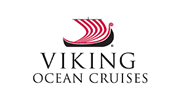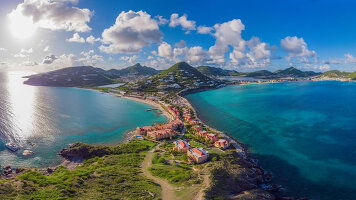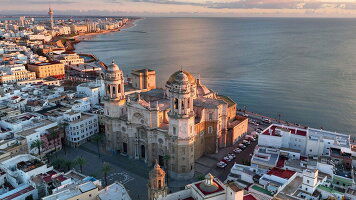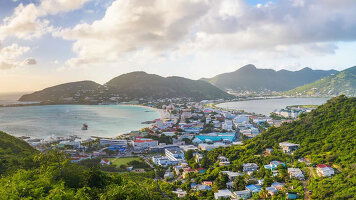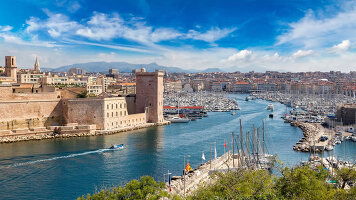Overview
Itinerary
The vibrant city of Barcelona, with its lively culture and inviting outdoor spaces, preserves a rich history. Picturesque medieval lanes wind through the oldest part of the city, the Gothic Quarter, where remnants of the city's Roman wall were uncovered. Its treasures include the neo-Gothic Barcelona Cathedral, the medieval Jewish district of El Call and the Romanesque Church of Santa Maria del Pi.
In the evenings, diners relax in the Royal Plaza at restaurants along the elegant square's perimeter.
The charms of Murcia lie in its embrace of its rural pleasures. Surrounded by farmland and fertile huertas, Murcianos are never at a loss for produce freshly plucked from “Europe's orchard.” They, in turn, live by the patient cycle of the harvest, going about their days at a leisurely pace. The Moors founded the city in 825 and introduced a vast irrigation network for crops and for city use. They were expelled by Ferdinand III of Castile in 1243. Murcia province remained a vassal kingdom until 1812 and became an autonomous region of Spain in 1982.
Granada is a splendid canvas of Moorish architecture, rich Andalusian tradition and remarkable history. It was the last stronghold of the Moorish Nasrid dynasty, whose 250-year reign ended during the 1492 reconquest of Spain by Catholic monarchs. The grand Granada Cathedral is a soaring celebration of that victory; its Royal Chapel holds the tombs of Queen Isabel and King Ferdinand, the celebrated pair who oversaw the triumph. Their magnificent fortress-palace, the Alhambra, was long the stronghold of Moors, and so offers a magnificent blend of Islamic and Christian detail.
Gateway between the Atlantic and the Mediterranean, the Strait of Gibraltar has a storied past. The ancients saw this passage as the edge of the world; no one dared pass through. The strait's most defining landmark is its enormous namesake rock, towering almost 1,400 feet above the waters. The soaring Rock of Gibraltar was one of the Pillars of Hercules of ancient myth. The strait's short span between continents has played a major historic role. Making the crossing is a dramatic experience, a passage between two great bodies of water.
Vigo is steeped in a history that dates back to the Romans. Vikings once saw trade opportunities here and landed briefly on its shores. Soon, Vigo's strategic importance was recognized throughout Europe, resulting in raids by English privateer Francis Drake. Today, Vigo is one of the largest cities in Galicia, Spain's autonomous northwestern region that boasts a rich farming and fishing heritage. The city's markets still overflow with seafood and all the ingredients locals need to prepare traditional caldo galego, a hearty potato soup made with grelo, or broccoli rabe.
Sail the Atlantic Ocean, divided in half, north to south, by the Mid-Atlantic Ridge. Longer than the Rockies, the Himalayas and the Andes combined, this underwater mountain range is the longest on Earth.
Portsmouth has been a naval port for centuries and is home to such historic vessels as Henry VIII's Mary Rose and Lord Nelson's HMS Victory. The only island-city in the United Kingdom, Portsmouth has been settled since before the days of the Roman Empire. It grew into a medieval port town; more recently, this was an embarkation port for the D-Day landings and served as headquarters for Dwight D. Eisenhower. The stunning citadel walls of Napoleonic forts greet ships as they approach through the Solent Strait.
Situated on the north bank of the Thames, Tilbury is steeped in history. The town is most famous as the site of a fortress built by Henry VIII to defend London from invasion by ships coming up the Thames. Upriver, the city is home to iconic power centers—Buckingham Palace, the Houses of Parliament, Westminster Abbey—from which the fate of the British Empire rose and wavered. Today, the city thrives amid a long tradition of arts and architectural innovation—from Shakespeare's Globe Theater to West End musicals, from Tower Bridge to the London Eye.
Cross the North Sea, where Vikings sailed as they established colonies on Scottish islands, coastal France and beyond.
Edinburgh has been Scotland's capital since the 15th century, despite the fact that the Union of the Crowns moved it to London in 1603. There is no capital quite like Edinburgh, with its gorgeous setting on green rocky hillocks and splendid views of the sea. Edinburgh Castle, home of the Scottish Crown Jewels and countless medieval treasures, overlooks the city from Castle Rock. The Royal Mile unfurls Edinburgh's architectural gems in all their finery, from the Canongate to St. Giles's Cathedral to the Palace of Holyroodhouse, the Scottish residence of British royalty.
Stretching between mainland Europe and Great Britain, the floor of the North Sea once formed a land bridge that connected the two during the last Ice Age. It was home to nomadic peoples, whose artifacts provide key insights into the Mesolithic Era.
Bergen is home to the Hanseatic League's only kontor (trading enclave) still in existence. Bryggen wharf, a row of timbered Hanseatic warehouses along a quaint quay, is a UNESCO World Heritage Site. Narrow wooden walkways are flanked by parallel rows of small, vibrantly painted buildings overlooking the picturesque Vågen Harbor. This is perhaps the most charming district of Bergen and a delight to explore, from its tight-knit community of workshops where artisans sell their wares to its cafés where freshly prepared smørbrød, or open-faced sandwiches, are on the menu.
Bergen, an ancient city with deep Viking roots, is located in the heart of western Norway, nestled between seven gargantuan mountain peaks. It is also the gateway to the country's magnificent fjords, including the Hardangerfjord and Sognefjord. Founded in 1070 on what was a Viking settlement, Bergen was Norway's capital during the 13th century; today, it is the second-largest city in Norway. Not to be missed is a stroll through the picturesque outdoor fish market, Fisketorget, where the fresh catch of the sea awaits—from cod and prawns to local caviar and icy oysters.
The Norwegian Inside Passage is a protected shipping lane that runs from Norway's capital of Oslo, down the Skagerrak coast and around the country's southern tip. It continues north along the coastline of the Norwegian Sea, before eventually terminating in the Russian waters of Siberia. It has been used by mariners for centuries, its channels protected from the dangers of the open water by countless skerries and the rugged coastline presenting opportunities for shelter in its many natural bays and inlets.
Narvik is situated on the innermost shores of the Ofotfjorden, within the Arctic Circle. The small town enjoys a dramatic backdrop, encircled by mountains and a glacier that spills right to the water's edge. The town served as a port city for the early Viking settlers. Much later, the discovery of iron ore in the nearby Swedish town of Kiruna forever shaped Narvik. Kiruna needed a year-round ice-free port from which to ship its new discovery, and so a rail link was built directly to the water. Still today, Narvik is a major exporter.
Hinnøya Island is Norway's largest coastal island and is famed for its diverse landscapes and natural beauty. Harstad's history is showcased at the Trondenes Historical Center, tracing the lives of locals from the Stone Age to the present day. The town lies 155 miles above the Arctic Circle and is known as the “Pearl of Vågsfjorden,” providing a gateway to explore the nature of northern Norway. Visitors can discover stunning fjords, admire majestic mountains and during the winter months, set out in search of the wonderous aurora borealis as she graces the nighttime skies.
Resting on the stunning shores of Altafjord, Alta is the gateway to some of Europe's most magnificent natural beauty. With its frequent clear skies, it is an ideal place from which to see the northern lights. Alta is perhaps most known as the site of ancient rock carvings dating back as far as 4200 BC. These fascinating depictions of hunters, gatherers, rituals, animals and geometric symbols are Norway's only primitive UNESCO World Heritage Site. The Alta Museum was built around the largest concentration of the carvings.
The small town of Alta lies in Norway's largely unspoiled county of Finnmark and is considered one of the world's northernmost cities. Here, pristine woodlands spill into the stunning Altafjord, which stretches some 24 miles. Perhaps, however, one of Alta's most striking sights is not natural at all; the boldly designed Northern Lights Cathedral in the center of town is a vision in titanium, with its circular exterior spiraling upward into a narrower cylinder and a breathtaking belfry.
Tromsø is Norway's most northerly city and has long been considered the gateway to the Arctic. During the summer months, pretty wooden houses exude an air of sophistication as they bask beneath the glow of the Midnight Sun. Winter brings pristine landscapes surrounded by snowcapped peaks and the aurora borealis, whose magical lights dance across the nighttime skies. World-renowned explorers have set sail from Tromsø's shores; Roald Amundsen, Norway's first son and the first explorer to reach both poles, is commemorated with a bronze statue in the city.
Bid farewell to your fellow guests and journey home. Or spend more time exploring, perhaps joining one of our extensions.
Life Onboard Viking Vela
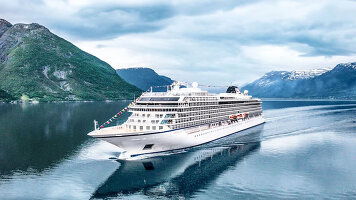
Embarking on her inaugural journey in 2024, Viking Vela is an all-veranda ship, part of Viking's fleet of award winning, state of the art ships incorporating all the comforts & luxuries you'd expect from Viking. Read more
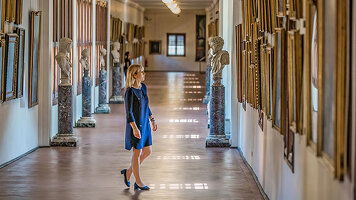
Viking are destination experts. With no casinos or children on board, you can be assured that the focus is firmly on enrichment and education. Read more
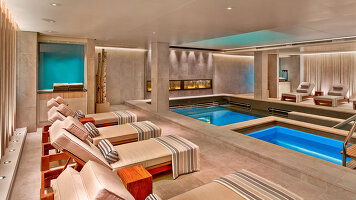
After a day of exploration or just to enhance the relaxation of a day at sea, the on-board Spa will leave you feeling recharged and revitalized. Read more
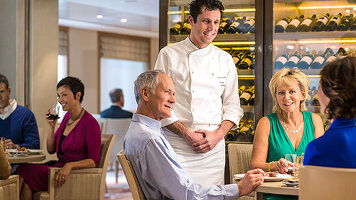
Viking offer eight on board dining options. Beer, wine and soft drinks are available with lunch and dinner at no additional charge of fee. Read more
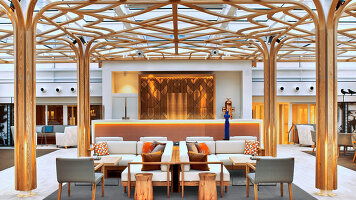
Viking proudly includes all that you need and nothing you do not. A variety of features and services valued at $200 per person per day are standard inclusions in your cruise. Read more

Viking include one complimentary shore excursion in every port of call. Enjoy exclusive entry to cultural treasures and seldom-seen collections around the world. Read more

Brochure
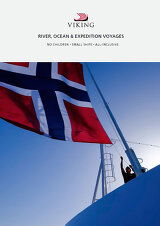
Viking River, Ocean & Expedition Voyages (2025-27)
Dates & Pricing
 USD
USD
Viking Cruise $25 Deposits!
Cabin Layout Options:
Select Cabin Preference:
Tour & cruises prices are per person. Prices shown have savings applied, are subject to availability and may be withdrawn at any time without notice. Pricing and trip details are correct at this point in time, however are subject to confirmation at the time of booking and are subject to change by Viking. For cruise itineraries, cabin images are sourced from the cruise-line and should be treated as indicative only. Cabin inclusions, upholsteries and room layout may differ to the image(s) shown depending on the ship selected and your sailing dates.




